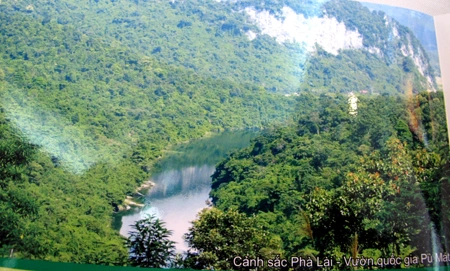The Western Nghe An Biosphere Reserve, recognized by UNESCO in 2007, is one of Vietnam’s most significant natural conservation areas and the largest inland biosphere reserve in Southeast Asia. Covering more than 1.3 million hectares, this reserve includes diverse ecosystems such as mountainous forests, rivers, and grasslands across the mountainous districts of Nghe An Province, including Ky Son, Tuong Duong, Con Cuong, Que Phong, and Anh Son.
1. Location and Scope
The Western Nghe An Biosphere Reserve is located in the western part of Nghe An Province, bordering Laos.
With an area exceeding 1.3 million hectares, it includes national parks such as Pu Mat, nature reserves like Pu Huong and Pu Hoat, and pristine forest areas.
2. Ecological Characteristics
Primary Forests: The tropical rainforest ecosystem in Western Nghe An is diverse and rich, home to many precious timber species and medicinal plants.
Abundant Flora and Fauna: This area provides habitat for hundreds of plant and animal species, including rare and endemic species like the Asian elephant, tiger, gaur, sun bear, white-cheeked gibbon, and the saola—a rare animal found only in Vietnam and Laos.
River and Stream Ecosystems: The region is interlaced with rivers like the Lam and Ca Rivers, along with numerous waterfalls and crystal-clear lakes, forming a rich freshwater ecosystem that supports local livelihoods.
3. Cultural Value and Local Communities
The reserve is home to several ethnic minority communities, including the Thai, Mong, Kho Mu, and O Du people. Each group has unique cultural traits, customs, and lifestyles, reflected in their languages, traditional architecture, clothing, and festivals.
Cultural Tourism: Visitors can experience local culture, participate in traditional festivals, enjoy music and dance of the Thai and Mong people, and explore local cuisine.
4. Ecotourism Activities
Exploring Pu Mat Forest: With its forest trails, visitors can immerse themselves in the rich ecosystem and observe various species of wildlife.
Community-Based Tourism: Ethnic minority villages in Western Nghe An welcome guests, allowing tourists to experience the lifestyle and culture of local communities.
Khe Kem Waterfall: One of the region’s renowned attractions, Khe Kem Waterfall is nearly 500 meters high, with white water cascading from the mountain peak, creating a majestic and poetic landscape.
5. Importance and Conservation Efforts
Biodiversity: The Western Nghe An Biosphere Reserve plays a vital role in conserving rare plant and animal species, particularly those at risk of extinction.
Environmental Role: This area helps protect water sources for neighboring regions, regulate the climate, and maintain a clean environment for local residents.
Conservation Efforts: Conservation organizations actively manage and monitor this area with measures to combat illegal hunting, protect primary forests, and encourage sustainable development.
6. Challenges and Future Prospects
Challenges: The Western Nghe An Biosphere Reserve faces significant challenges, such as illegal wildlife hunting, unlawful logging, and economic development pressures.
Future Prospects: The development of ecotourism and community-based tourism presents sustainable growth opportunities for this area. Conservation programs and community education also contribute to raising awareness about the importance of protecting natural resources.

